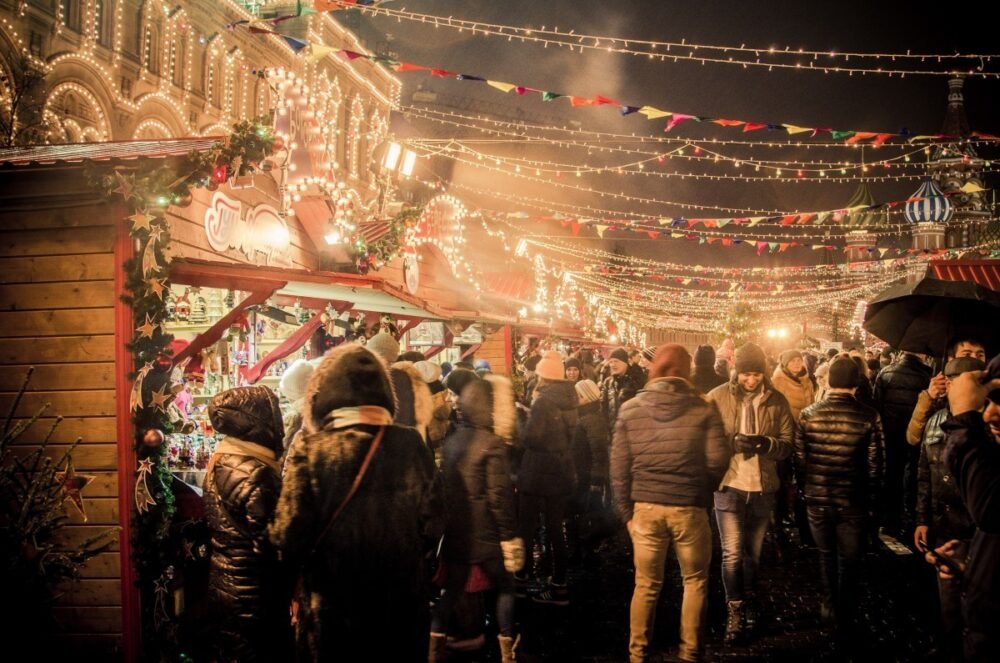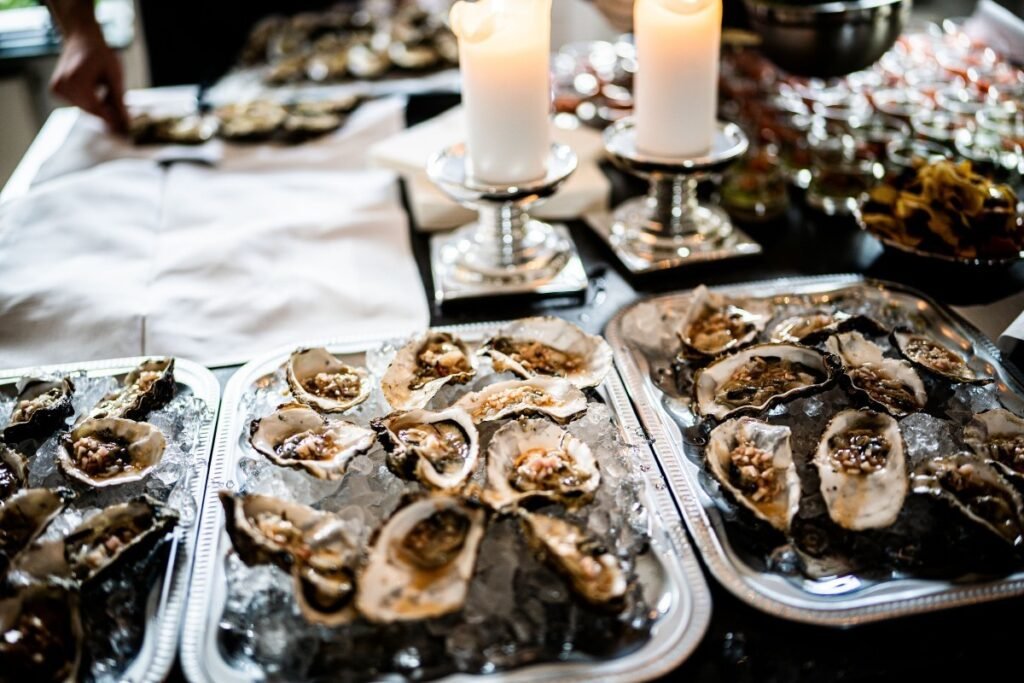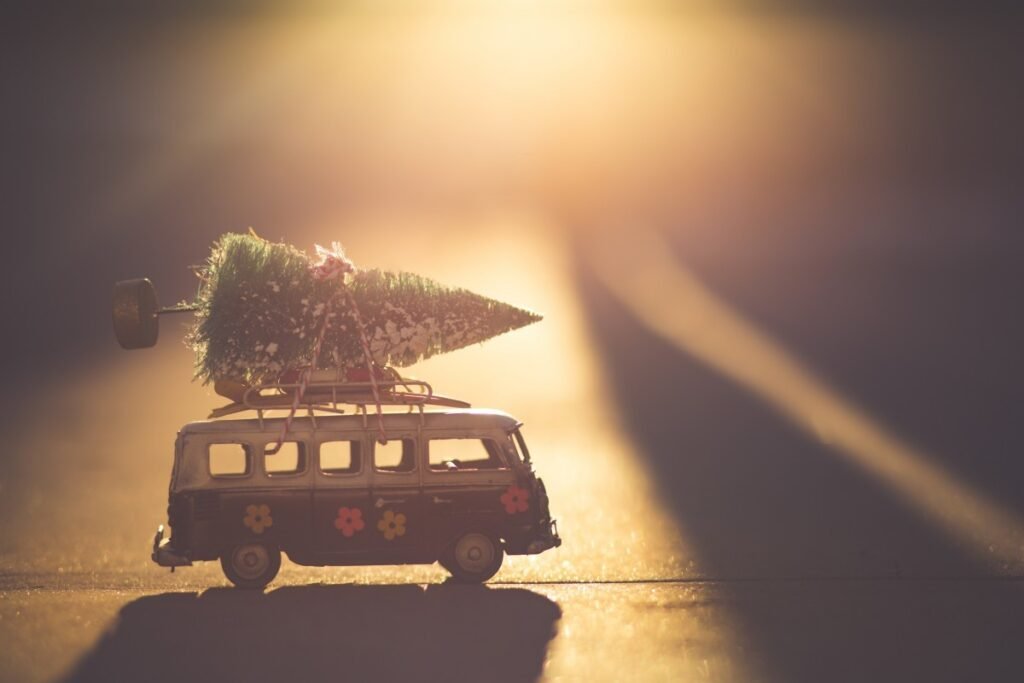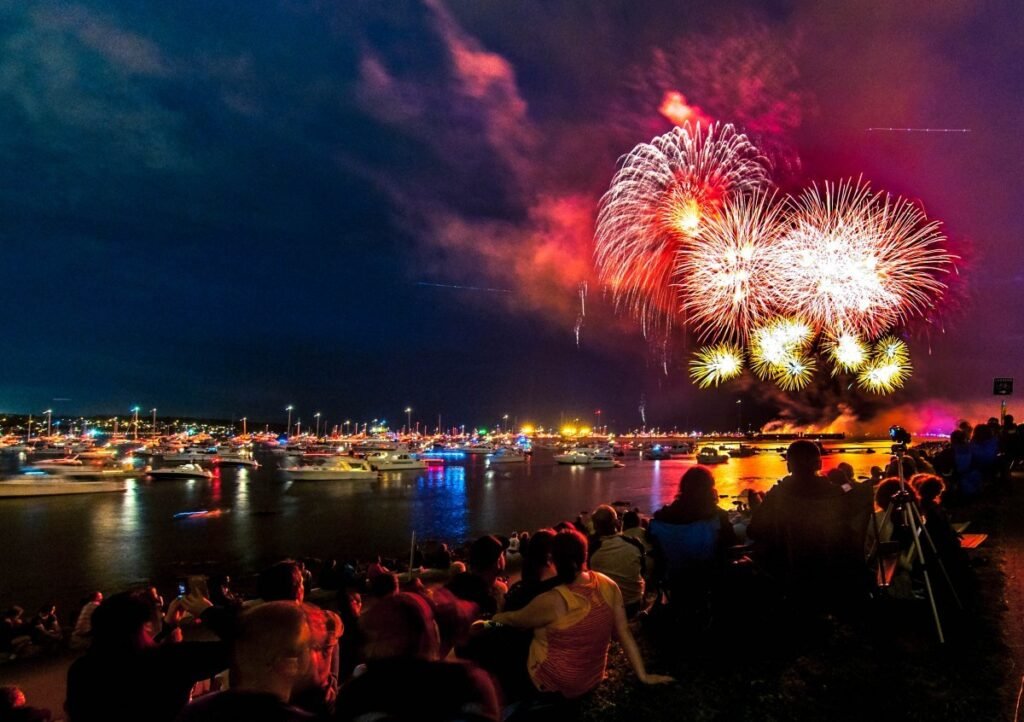Christmas Eve traditions around the world

Not sure what to do this Christmas Eve? This list of Christmas Eve traditions from around the world may help bring something new to your yuletide celebrations this year.
Of course, every family has their own Christmas Eve traditions that are unique to them, especially in the multicultural world we live in nowadays. It is also a fact, however, that people love getting all traditional over Christmas, so here is a list we’ve compiled of different Christmas Eve traditions from around the world to help you get your Christmas freak on.
Wigilia in Poland
Let’s begin with the Christmas Eve traditions of the largest foreign community here in Ireland, the Polish. Even though the 24th isn’t an official public holiday, most Christmas celebrations take place on Christmas Eve in Poland. It is a family-focused day flooded with food and steeped in traditions. However, several quirky traditions are observed that make the day stand apart from our own traditions here in Ireland. Here is a list of them:
(CC BY 2.0)
- Waiting until the first star appears in the sky before eating to commemorate the Star of Bethlehem.
- Eating Opłate. This religious-image embossed wafer made of flour and water is given to everyone in attendance. Each person then shares a piece with fellow guests and exchanges good wishes. This is done in commemoration of the breaking of bread at the last supper.
- People harass their family pets by trying to get them to talk. This is done because, according to Polish legend, animals were granted the gift of speech on Christmas Eve to reward them for their role in the birth of Christ.
- Leaving an empty place at the dinner table. This Christmas Eve tradition is actually very sweet, and there is definitely a thing or two we could learn from it. Leaving one empty place at the dinner table is a Polish Christmas Eve tradition ensuring that should someone knock and ask for food or shelter, there is a place already waiting for them.
- Abstaining from meat and hard liquor is a commonplace practice during this meal which comes from the Roman Catholic practice of abstaining from meat on Christmas Eve. I’m not sure how widely either of these traditions are followed in Poland though…
- Putting hay beneath the tablecloth. This tradition is reminiscent of a certain Nativity scene, I get that… but why at the dinner table?
- Having 12 dishes on the table is a tradition that is supposed to ensure good luck for the following year. Each of the twelve dishes represent a month of the upcoming new year. Tradition has it you should try each dish to avoid bad luck. Classic Polish Christmas dishes include, amongst others, cabbage and mushroom pierogi and the poppy seed cake known as makowiec.
Heiliger Abend in Germany
Germany is another country that has its own special Christmas Eve traditions, beloved by Germans both at home and abroad. Christmas itself is celebrated on Christmas Eve and like with most cultures, it is customary for people to spend the evening with family. Here are a list of German Christmas Eve traditions:
CC BY 2.0
- Decorating the Adventskranz. The advent wreath is a staple for many German families around Christmas time. It is typically put on the living room table four Sundays before Christmas and is decorated with four large candles, pinecones and berries. One new candle is lit on each of the four Sundays preceding Christmas. On Christmas Eve, families will gather around the candlelit wreath and spend a reflective hour together. Some families may sing Christmas carols or enjoy a child’s performance on the flute or piano. It’s all very civilised. This tradition is more common amongst families that do not reveal their decorated Christmas tree till Christmas Eve.
- On that note, many people don’t decorate their Christmas trees till Christmas Eve.
- In Germany, presents are usually exchanged on Christmas Eve. In many Protestant families, children are told that Santa Claus brought the presents. In many Catholic families, they are told it was the baby Jesus.
- Drinking Feuerzangenbowle is another Christmas Eve tradition in Germany. It is an incredibly strong drink comprising of mulled wine and a generous helping of rum which is then set on fire.
- Having a large meal with family also takes place in the evening. A typical Christmas Eve meal may consist of carp, potato salad, boiled potatoes, cucumber salad and lemon slices.
Réveillon de Noël in France
Christmas Eve has been an important day in France for hundreds of years and their traditions originated long before the introduction of Christianity in France. Even though many people work on the 24th, the day is hugely important. Here are some highlights for you:

- Just like for everyone else, Christmas time in France revolves around food. The main Christmas meal, Réveillon, is usually eaten on Christmas Eve after midnight mass. Dishes vary depending on province but something that remains constant is the lavish indulgence in luxury food and having 13 desserts to symbolize Jesus and his 12 apostles.
- Decorating homes with evergreen plants and lighting fires were a Christmas Eve tradition long before Christianity in France. According to tradition you pour wine over a large log, set it on fire and let it burn slowly over the next couple of days. Some people even keep remnants of the log as luck charms till they burn them in the same ritual the following Christmas Eve.
- People open Christmas presents and children are told that they are from Pere Noël (Father Christmas) or the baby Jesus.
Vigilia di Natale in Italy
As Italy is a predominantly Catholic country made up of hearty eaters, you could say that Christmas is a pretty big deal. Here is a list:

- On Christmas Eve in Italy, it is an old Catholic tradition to fast before the festive celebrations which start after midnight mass.
- Babbo Natale (Father Christmas) brings presents to children on Christmas eve.
- La Vigilia, Feast of the Seven Fishes, is the main meal that is had on Christmas Eve which – you guessed again – is made up of seven varieties of fish, with eel being the most traditional. This particular tradition stems from the Roman Catholic practice of abstaining from meat on Christmas Eve.
Sochelnik in Russia
Christmas is actually a relatively quiet holiday in Russia, this could be some leftover remnants from the days of the Soviet Union, where Christmas was banned following the 1917 revolution. To those who do celebrate it, it is a predominantly orthodox affair.

- Just like in Italy, it is a Christmas Eve tradition to fast in Russia. The fast usually lasts until after the evening service or the first stars come out. For some, the fast may be broken by eating a traditional Russian dish called kutya which consists of grains, honey and poppy seeds. No meat is allowed.
- Another popular tradition is to have the house blessed on Christmas Eve by a priest who will sprinkle holy water in each room and pray for everyone to have a blessed year.
Nochebuena in Spain
Christmas Eve in Spain is another night rooted in family traditions and lots of food. The Spanish King gives a speech every year in a television broadcast but according to my very reliable sources, no one actually watches it unless it’s incorporated into a drinking game.

- Most people will attend midnight mass in Spain, which is also known as La Misa Del Gallo (The Mass of the Rooster). It is known by this name because a rooster is supposed to have crowed during the night Jesus was born.
- The fun doesn’t end once Mass is over, once the midnight service is over, it is an old Christmas Eve tradition for people to walk through the streets carrying torches, playing guitars and beating on drums.
- Most families will eat their main Christmas meal on Christmas Eve before the midnight mass service. The contents of this meal usually includes mushroom stuffed turkey and Spanish sweet treats such as turron, mazapanes (marzipan) and polvorones.
- Piden el aguinaldo is when children go from door by door singing Villancicos (Christmas carols) for money and it wouldn’t be Nochebuena without it.
Julaften in Norway
In Norway, the focal point of Christmas falls very much on the 24th December. Although not everyone in Norway will celebrate Christmas the same way, it is still very much a stay at home kind of day celebrated with food and family.

- It all kicks off with “Little Christmas Eve” on the 23rd. Traditions vary from family to family but a typical family may decorate the Christmas tree, make gingerbread houses or eat risengrynsgrøt – a hot rice pudding served with sugar, cinnamon and butter. An almond is hidden in one of the puddings and if it turns up in your portion you win a marzipan pig!
- Most people will have a large dinner at home with their families on Christmas Eve. One of the most popular dishes is probably ribbe (seasoned pork belly) served with sauerkraut and redcurrant sauce.
- When gifts are exchanged on Christmas Eve, it is customary for children to be told that their gifts are from Santa or folkloric gnomes called Nisse, which are short 19th-century creatures with long white beards and a red hats.
- The 24th also kicks off the beginning of a tradition where families light a candle every night starting on Christmas Eve and ending on New Year’s Day.
Véspera de Natal in Brazil
As Brazil is a largely Catholic population, Christmas is a pretty big deal. Parties, food, churches, Presepios (nativity scenes), decorated trees, presents – you name it! Although the whole holiday is a pretty big deal, Christmas Eve has its own special traditions too. Here are the highlights:

- Fireworks. At midnight every Christmas Eve, the nation celebrates with a massive show of fireworks.
- Just like in Spain, Misa de Gallo is celebrated in Brazil and also just like in Spain, many Brazilians attend a midnight mass on Christmas Eve. However, the reason it is called mass of the rooster in Brazil is because the celebrations may last until the rooster crows.
- It is also a Brazilian Christmas Eve tradition to have a large family meal around 10pm. A typical meal consists of turkey, ham, salads, fresh fruits and is served with rice cooked with raisins and a spoonful of farofa. Popular desserts include the German pudding stollen, and the Italian panettone bread.
- At midnight people wish each other a happy Christmas and exchange presents. Children are told that Papai Noel (Santa Claus) brings presents to the children.
Ajunul Craciunului in Romania
In Romania, Christmas celebrations truly kick off on the 24th, when it’s time to decorate the Christmas Tree.

- Colindatul (carol singing) is a huge part of Christmas in Romania and children go from house to house singing carols and dancing in return for sweets, fruit, traditional cakes called cozonaci and sometimes money.
- In many parts of Romania, it is a Christmas Eve tradition for someone to dress up as a goat known as the Capra go around with the carol singers causing mischief!
- A drumming band or dubasi made up of unmarried men is another common sight in Romania in Christmas Eve going around the streets and getting presents.
Kūčios in Lithuania
Christmas Eve, Kūčios, is more important than Christmas Day itself in Romania. It falls on the last day of Advent, which makes it even more special. A lot of their traditions are similar to Poland’s, but with their own unique flavour, of course.

- Kūčios is also the name of the huge meal families have on Christmas Eve. The meal traditionally shouldn’t contain any meat, like with most Christmas Eve meals rooted in Roman Catholic traditions.
- Before Kūčios can be eaten however, the whole house has to be cleaned, everyone has to wash and then put on clean clothes. This tradition is supposed to protect those who adhere to it from evil and diseases in the coming year.
- A lot of people fast during the day before the Kūčios meal
- The meal starts once the first stars can be seen in the sky.
- Straw is part of the table decoration, but unlike Polish the tradition, the straw is spread on top of the tablecloth, not underneath it. The table is also decorated with candles and small branches from fir trees. The straw pays tribute to baby Jesus in the manger.
- Like in Polish tradition, an extra place is set at the table – however, instead of being for a person in need, it is to commemorate a family member who has died during the year (or can’t come for other reasons). People who are going to be alone on Christmas Eve are also invited to the meal.
- The Kūčios meal usually consists of 12 dishes, one for each of Jesus’s followers.
- Lithuanians also eat wafers embossed with the Nativity scene
- Sometimes an apple is cut into as many pieces as people at the meal and shared. This Christmas Eve tradition is a tribute to the apple eaten in the Garden of Eden.
- People exchange presents between themselves on Christmas Eve and afterwards, the children tend to go to bed and the adults go to Midnight Mass.
Do you want to carry on soaking up the Christmas vibes? Why not check out our Ireland Christmas Market Series!
Let us know in the comments section below if you have any of your own traditions you’d like to share!

